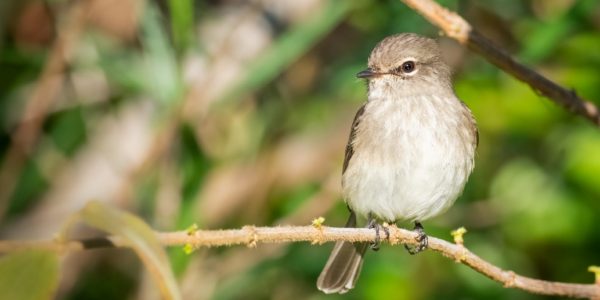Those who venture into the woods on a weekend in May might spot an “Old Coot” or a “Lower Chippewa River Titmouseketeer.” These are not new species to add to the Sibley Guide to Birds, but rather team players in the Great Wisconsin Birdathon, an annual event that brings hundreds of birders outdoors for spring scoping and raises money for conservation programs in the state.
The slogan: see a bird, save a bird.
The goal is to raise $70,000, according to the Natural Resources Foundation of Wisconsin and the Wisconsin Bird Conservation Initiative.
Birders — there are no restrictions on experience levels — join a team or create a team online and then find sponsors to pledge to donate for each species a team sees during a 24-hour period.
“It’s like a walkathon but with birds instead of miles,” says Diane Packett, whose role as birdathon coordinator is to manage the website, recruit participants and help as many as 100 teams get set up to raise money and count birds.
Some teams got out as early as April 15, but the event continues through June 15.
Among the participants are eight teams of hotshot birders with a goal of raising $30,000:
- Lake Superior eBirders in Ashland and Bayfield counties, who last year counted 161 species.
- Madison Green Team of Dane County, who travel by bike, foot and kayak in search of birds at the UW Arboretum, Dunn’s Marsh, along the Capital City Bike Trail, in the Nine-Springs Wetlands and elsewhere.
- Cutright’s Old Coots, whose territory includes Ozaukee, Sheboygan, Fond du Lac and Dodge counties and who participate in honor of Wisconsin Conservation Hall of Fame member Noel Cutright.
Other celebrated teams include Curlew & Screech representing Columbia, Dane, Iowa, Sauk, Richland, Grant and Crawford counties; Secretary Birds of Door County and Green Bay; WSO Tessen Team of the Green Lake region; MotMotley Crew of Dodge County and the Titmouseketeers of Eau Claire, Dunn and Buffalo counties.
“The signature teams include the state’s most serious birders, but the Great Wisconsin Birdathon can be great fun for everyone, no matter what skill level,” says Ruth Oppedahl, executive director of the NRFW. “Birding in your backyard for just a few hours is a wonderful way to learn about Wisconsin’s birds, while also taking action to help conserve them.”
Packett says, “You can make the birdathon whatever you went. We have someone who does the birdathon from his backyard. Some people spend half a day. Some people start at midnight and drive around the state.”
Students also get involved, including a grade-school class that identifies species on a neighborhood walk.
“A lot of people think it is a great big species competition,” said Packett. “It can be. But it doesn’t have to be.”
The birdathon benefits the Bird Protection Fund, which supports the Wisconsin Breeding Bird Atlas II, Osa Conservation and the recovery of whooping cranes and the Kirtland’s warbler.
Get involved
The Great Wisconsin Birdathon continues through June 15, a partnership between the Natural Resources Foundation of Wisconsin and the Wisconsin Bird Conservation Initiative. To create or join a team or pledge to a team, visit wibirdathon.org.
